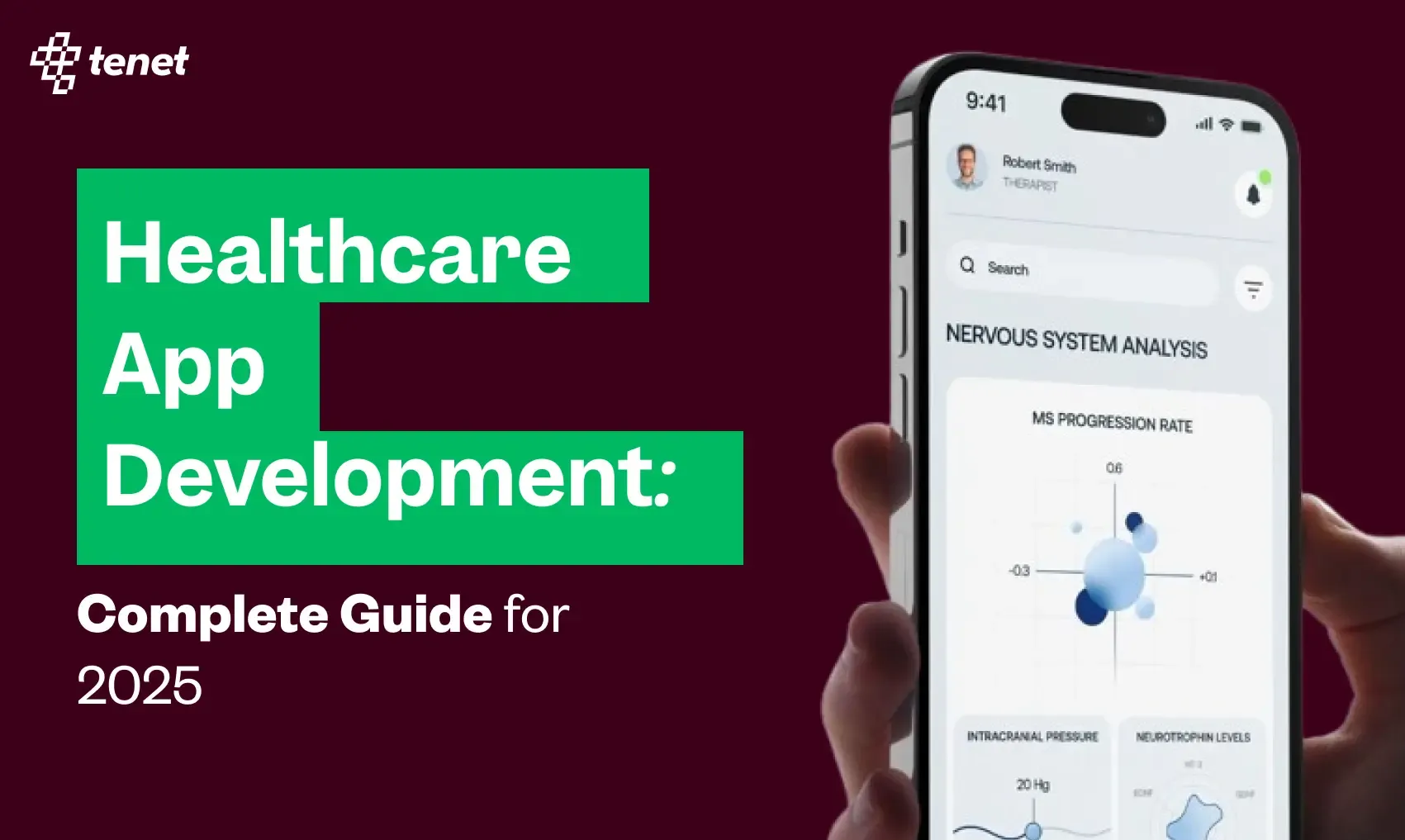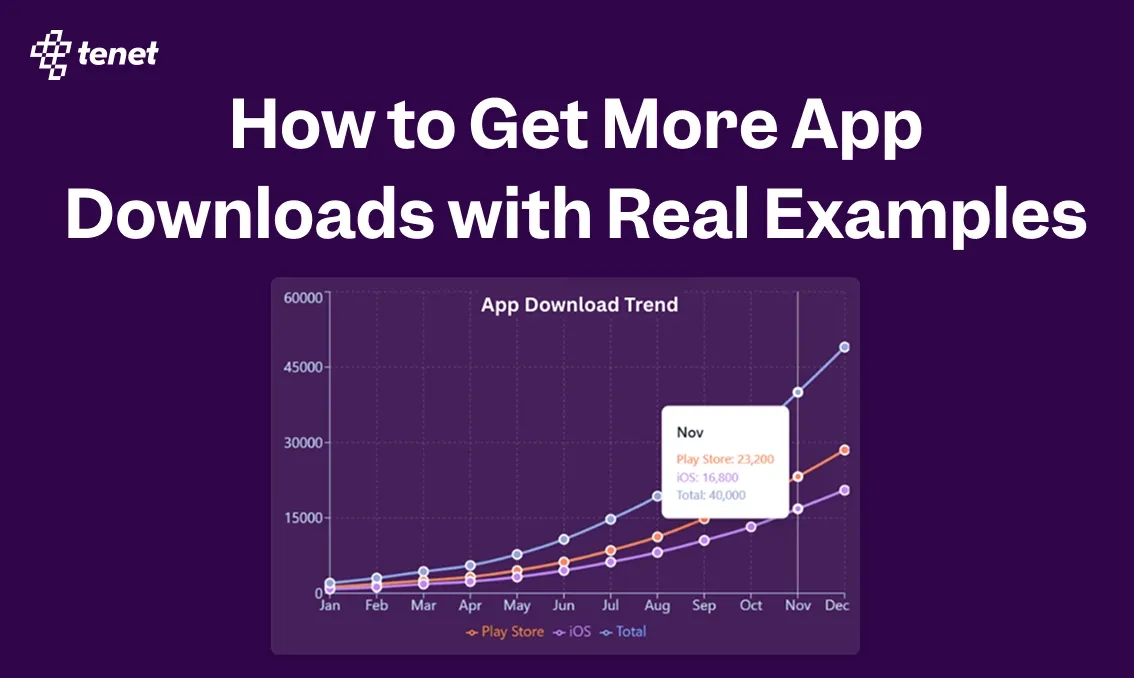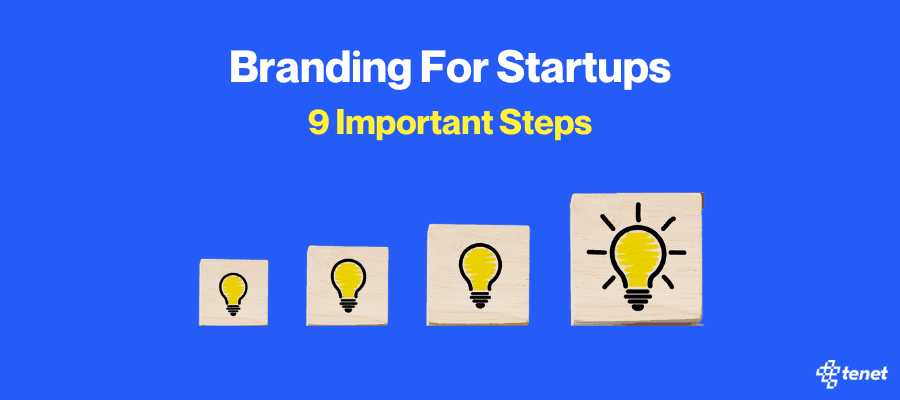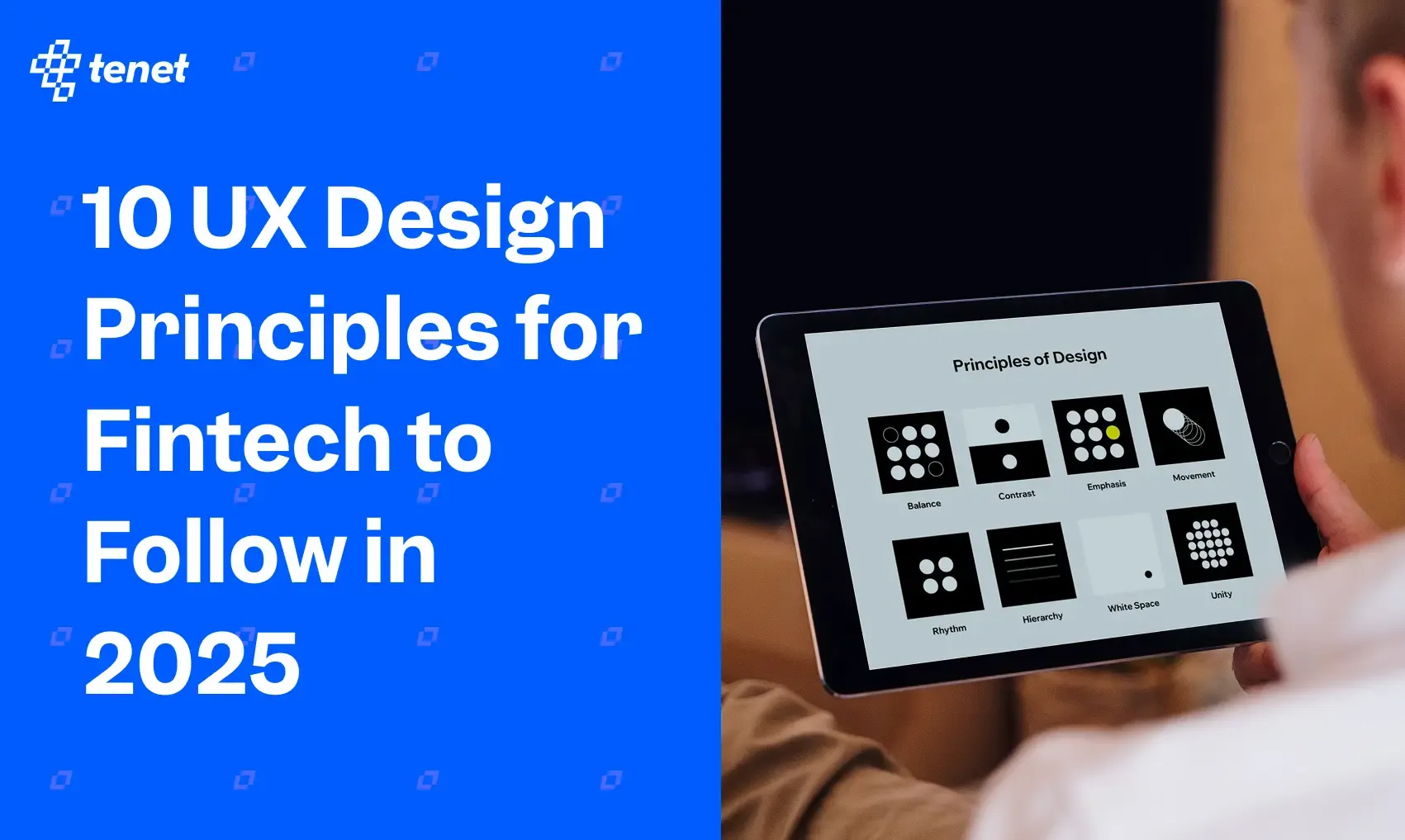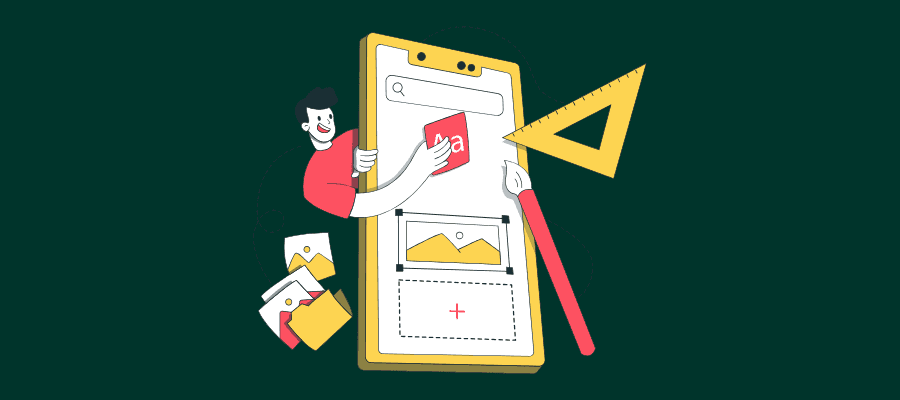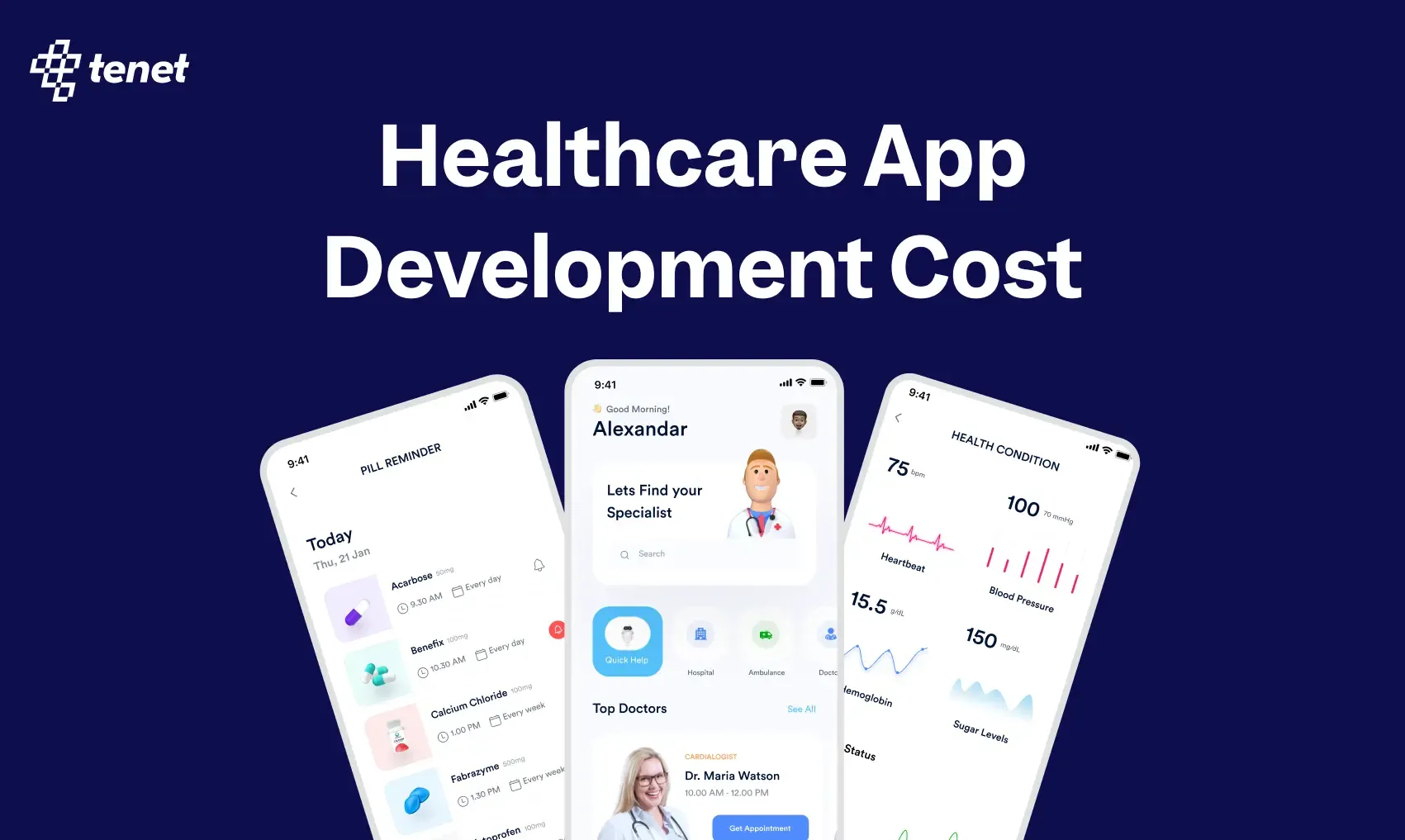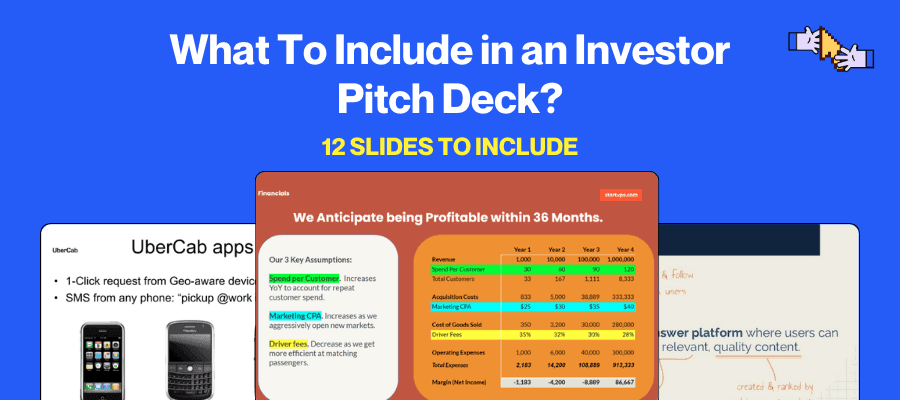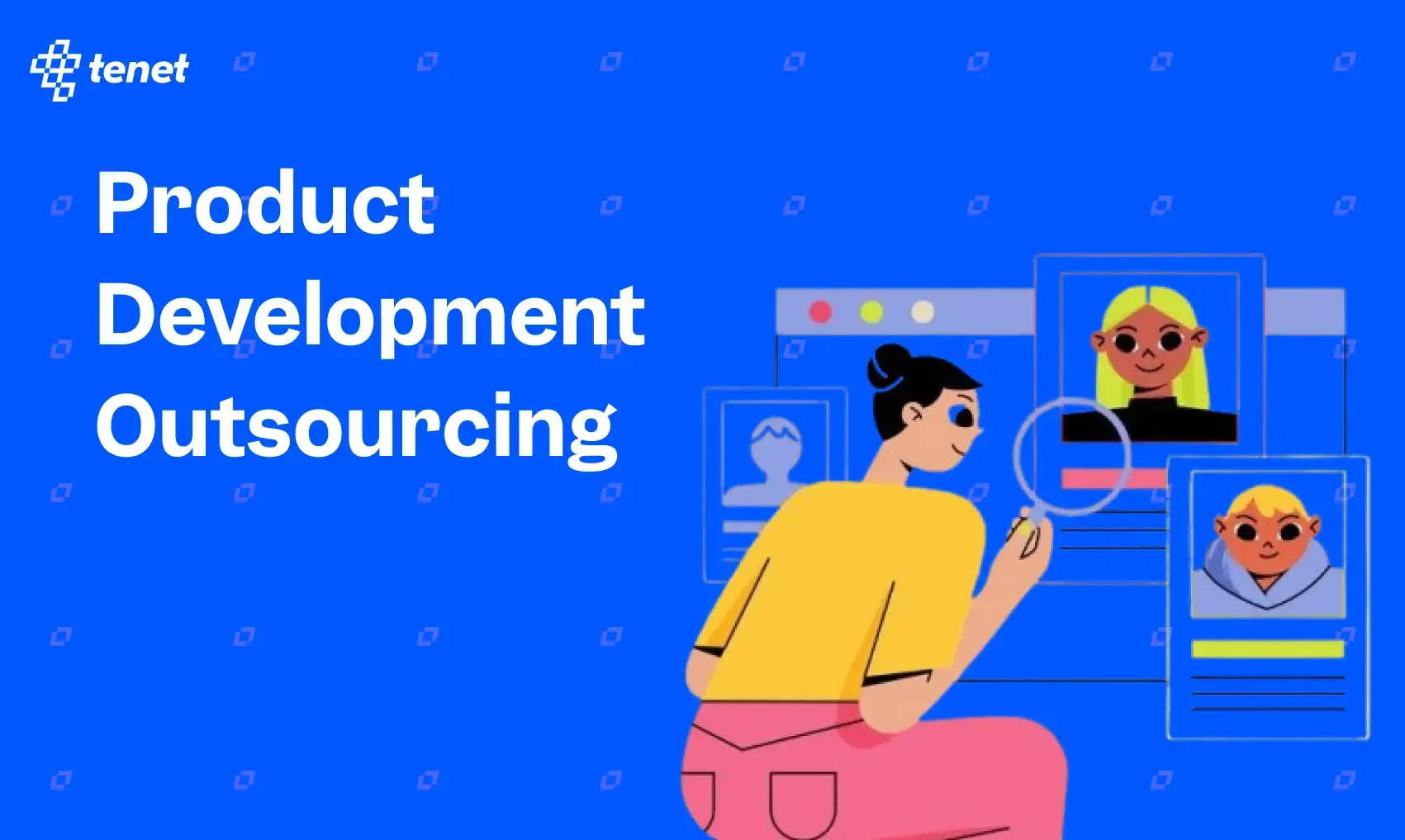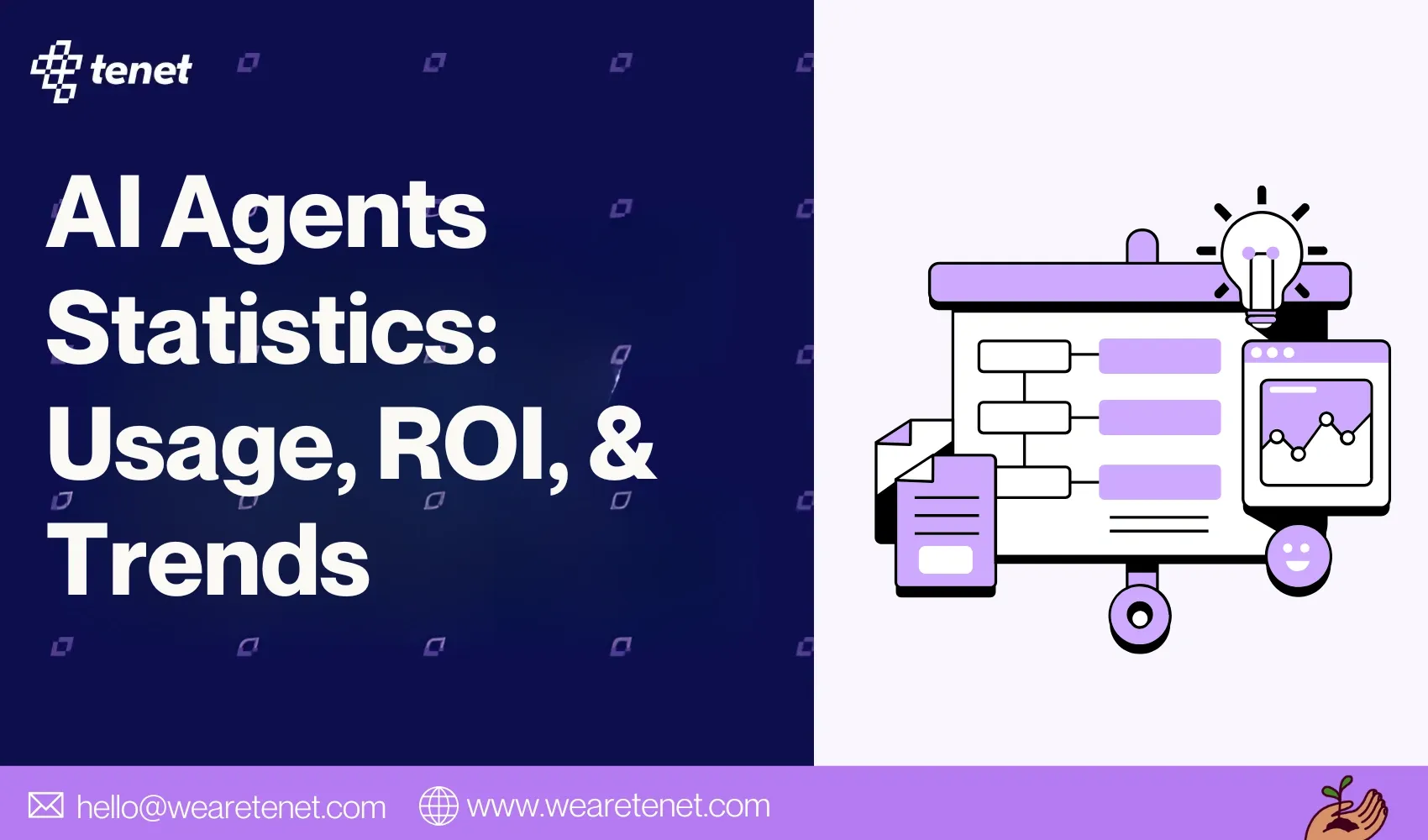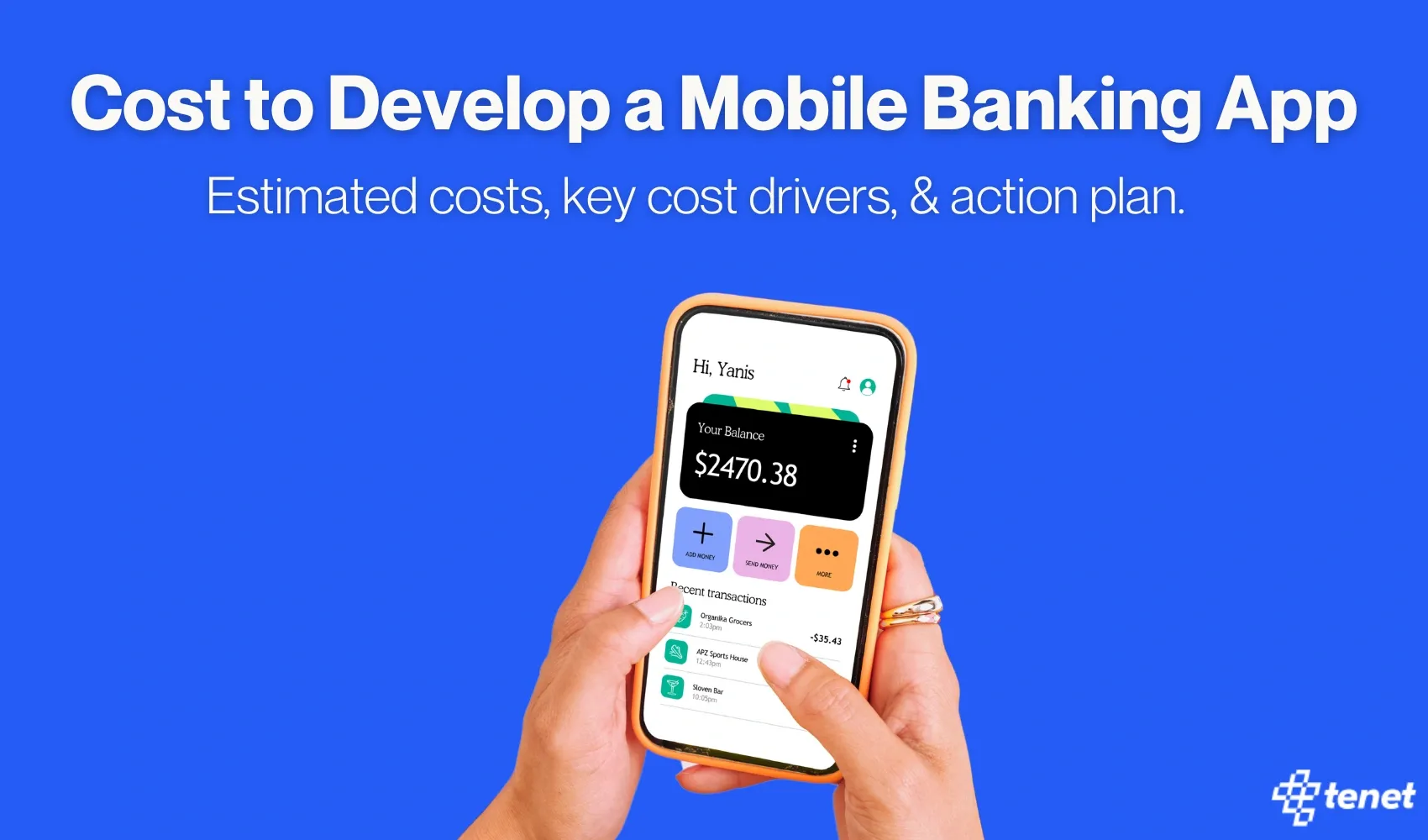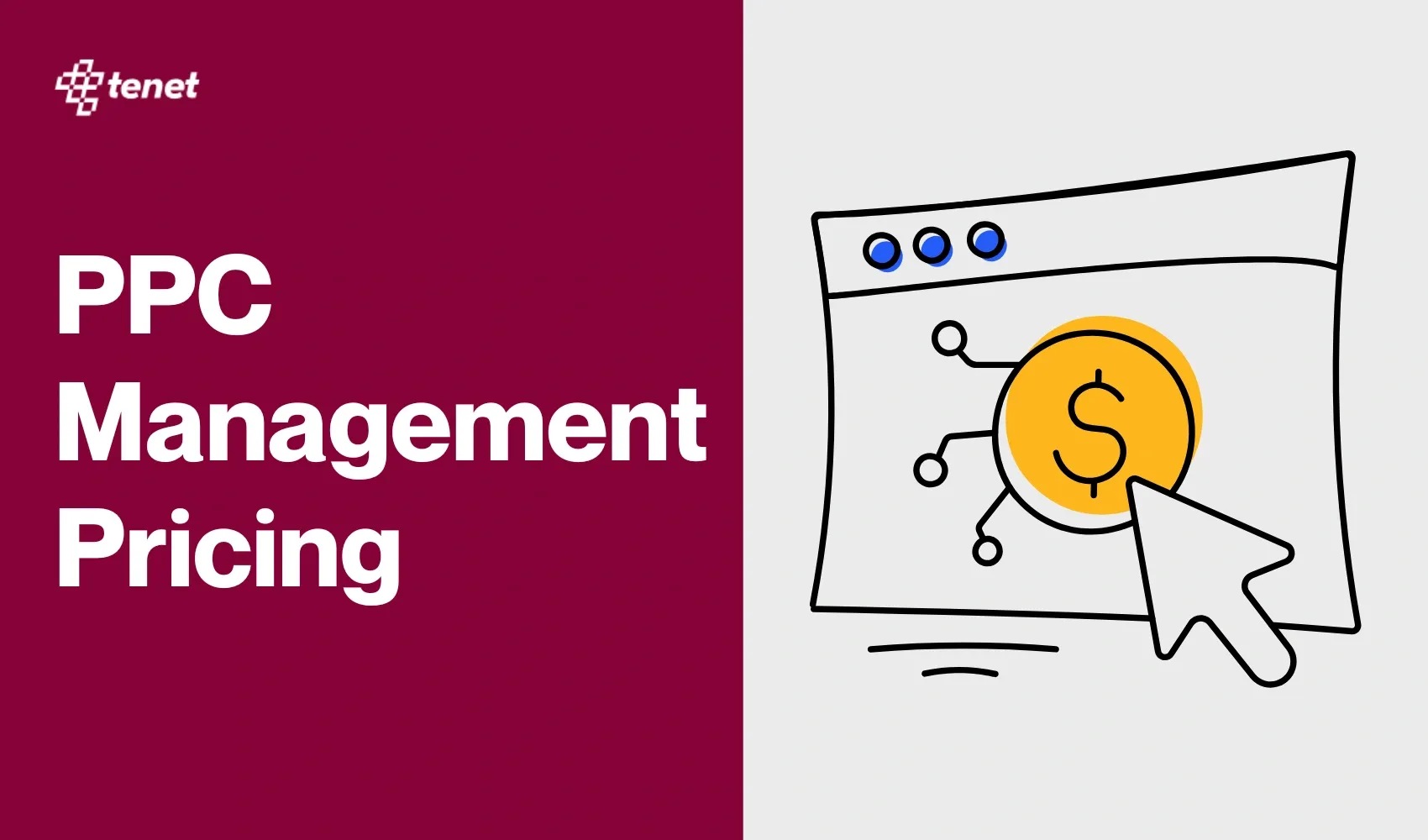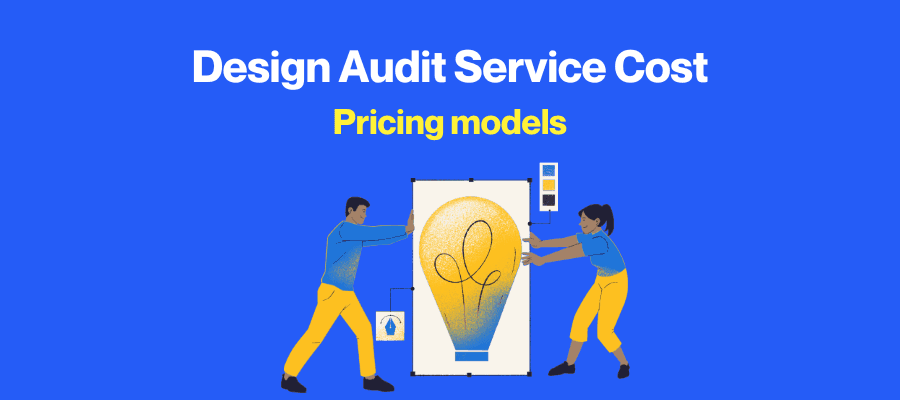How to Calculate UX Design ROI: (Formula and Examples)
Share
Share

Calculating the ROI of UX design is challenging because it’s hard to isolate the design’s financial impact amid many variables and intangible benefits.
This often leads to undervaluing UX, causing businesses to miss growth opportunities and waste marketing budgets without understanding real returns.
Tenet has analyzed over 300 digital products and developed proven methods to accurately measure UX ROI, enabling companies to make data-driven decisions that drive revenue growth.
In this guide, learn practical steps to calculate your UX ROI and unlock the true business value of user experience.
What is UX design’s ROI?
UX design’s ROI (Return on Investment) is a metric that quantifies the business value gained from investing in user-centered design. It calculates the financial returns, such as increased revenue, higher conversion rates, improved customer retention, and reduced support costs, relative to the money, time, and resources spent on UX initiatives.
Unlike standard ROI calculations that focus mostly on direct financial returns, such as immediate sales or cost reductions.
UX ROI considers both measurable gains (increased conversions, reduced support costs) and intangible benefits (stronger customer loyalty, improved brand reputation, higher lifetime value).
Formally, UX ROI can be expressed as:
ROI (%) = [(Total Financial Gains from UX – Total Cost of UX Investment) / Total Cost of UX Investment] × 100
“Total Gains from UX” = Increased revenue (from higher conversion rates or recurring customers) and cost savings (like fewer support calls)
“Total UX Costs” = Covers expenses for research, design, implementation, and testing.
Let me cite an example:
Suppose a redesign improves conversion rates, resulting in an extra $50,000 in annual revenue, and reduces support costs by $10,000, with total UX investment of $20,000:
- ROI (%) = [($50,000 + $10,000 – $20,000) / $20,000] × 100
- ROI (%) = ($60,000 – $20,000) / $20,000 × 100
- ROI (%) = ($40,000 / $20,000) × 100
- ROI (%) = 2 × 100 = 200%
This indicates that every dollar invested in UX yields a two-dollar return in value, resulting in a 200% ROI.
👉 Explore our UI UX design services by country:
- UI UX Design Agency in India
- UI UX Design Agency in London, UK
- UI UX Design Services in the USA
- UI UX Design Agency in Dubai
When should I measure the ROI of UX design?
Timing is everything when it comes to measuring UX design ROI. Measure too early, and you'll miss the full impact. Wait too long, and you might miss critical opportunities to optimize. Here's your strategic timeline for getting meaningful UX ROI data.
The Three-Phase Measurement Approach
Phase 1: Immediate Impact (1-4 weeks)
This initial phase focuses on quick, measurable UX improvements that deliver fast wins. By tracking key performance indicators shortly after implementation, you can identify instant benefits and validate design changes early without waiting for long-term behavioral shifts.
What to Measure:
- A/B test results on specific UI changes
- User task completion rates
- Time-to-complete key actions
- Error rates and support tickets
Best For:
- Small UI optimizations (button placement, form fields)
- Landing page redesigns
- Checkout flow improvements
Example: Changing a "Submit" button to "Get My Free Trial" might show +15% conversions within 48 hours, but don't expect deeper behavioral shifts yet.
Phase 2: Behavioral Shift (1-3 months)
This phase focuses on how users adopt and integrate new features or redesigned interfaces into their regular habits. While immediate fixes address obvious issues, long-term success depends on changes in user behavior, similar to how refactoring code improves productivity only after time.
What to Measure:
- User engagement patterns
- Feature adoption rates
- Customer onboarding success
- Monthly active users (MAU)
Best For:
- New feature launches
- Navigation restructuring
- Mobile app redesigns,
- User dashboard improvements
Example: After redesigning a mobile banking app, track if users complete more transactions per session over 6–8 weeks to measure genuine behavioral shifts.
Phase 3: Business Impact (3-12 months)
This phase reveals UX design’s strategic value by measuring how user experience improvements affect broader business outcomes. It captures the long-term benefits of increased customer loyalty, sustained revenue growth, and reduced acquisition costs.
What to Measure:
- Customer lifetime value (CLV)
- User retention curves
- Revenue per user
- Customer acquisition cost (CAC)
Best For:
- Complete product redesigns
- Subscription model changes
- Multi-platform UX strategies
- Brand experience overhauls
Example: Spotify's UX investment in personalized playlists took 6+ months to show significant impact on user retention and subscription upgrades, but the long-term payoff was substantial, driving millions in additional revenue.
Emergency Measurement Protocols
Some situations demand immediate UX ROI assessment:
- Conversion rates drop more than 10% overnight
- Support tickets spike beyond 50% of normal volume
- User complaints start trending on social media
- App store ratings begin declining rapidly
- Critical user flows break or malfunction
When your checkout abandonment rate suddenly jumps from 30% to 45%, you don't wait for the next quarterly review; you start measuring UX impact within 24-48 hours.
REMEMBER
UX ROI measurement isn't a one-time event; it's an ongoing feedback loop that should match your product development cycles and business goals.
Why measure the ROI of UX design?
Measuring the ROI of UX design is like running automated tests on your product’s performance; you need data to know what’s working and what’s not. Just as developers wouldn’t ship software blindfolded, businesses shouldn’t invest in UX without knowing its impact on the bottom line. Here are some major reasons to measure UX design return on investment:
1. Prove Value to Stakeholders
When you enter a budget meeting with clear data demonstrating the clear impact of UX, like the UX improvements increased conversion rates by 40% and reduced support costs by $200K annually, design moves from a discretionary expense to a business driver.
Without measurement, UX teams often find themselves fighting for resources with vague promises of "better user satisfaction." With solid ROI data, you're presenting irrefutable business logic that CFOs and CEOs actually understand and can prioritize.
2. Justify Design Team Investments
Every startup and enterprise asks the same question: "Should we hire another developer or another designer?". Measuring ROI gives you the answer to this in dollars and cents.
Airbnb exemplifies this with its data-driven iterative UX design approach, which directly contributed to massive business growth.
By continuously refining its website and app through A/B testing, user feedback, and analytics, Airbnb simplified booking flows, improved search filters, and personalized recommendations. This refined search algorithm and personalized experiences reduced booking friction, substantially increasing bookings and user engagement, showcasing how investment in UX design translates to measurable revenue growth and operational efficiency
3. Identify High-Impact Areas
Not all UX improvements are created equal. Some changes move the needle dramatically, others barely register. ROI measurement shows you exactly where to focus your limited time and budget. For instance, you might discover that redesigning your onboarding flow generates 10x more value than perfecting your settings page. Without measurement, you're making changes based on gut feelings rather than data-driven insights
4. Prevent Costly Design Debt
Design debt happens when shortcuts or quick fixes are made in the user experience design to meet immediate goals. These compromises can create problems later, such as inconsistent interfaces, confusing workflows, or duplicated design efforts. Over time, design debt accumulates like a hidden cost that makes future improvements slower and more expensive.
For example, when IBM started tracking design ROI, they found that fixing UX issues post-launch cost 6-100x more than addressing them during the design phase. Now they measure design impact throughout the development cycle, catching problems before they become expensive fixes.
By tracking UX performance and measuring ROI continuously, teams can catch and fix design debt before it grows into costly problems, saving time and resources.
5. Transform Design from Art to Science
Measuring UX ROI shifts the conversation from subjective opinions ("I think users will like this") to objective reality ("Users converted 35% more with this approach").
This data-driven mindset doesn't kill creativity; it channels it more effectively. Designers can still innovate and experiment, but now they have concrete feedback on what works and what doesn't.
6. Create Accountability and Ownership
When design decisions are tied to measurable outcomes, teams naturally become more thoughtful about their choices. Every interface element becomes a hypothesis that can be tested and validated.
The best example for this is Spotify, whose design team measures everything from playlist engagement to subscription conversion rates. This accountability has made them incredibly strategic about which features get priority and how interfaces are optimized.
7. Stay Ahead of Market Shifts
Tracking the ROI of UX design enables companies to detect shifts in user behavior more quickly than competitors. By analyzing user data and engagement metrics continuously, organizations can identify emerging trends and changing customer needs early.
This proactive insight allows faster adaptation of product interfaces and features, preserving user satisfaction and competitive positioning before market changes become obvious to others.
👉 Following UI/UX design trends ensures your product stays relevant and competitive.
8. Benchmark Against Industry Standards
Without measurement, you have no idea if your UX performance is industry-leading or lagging. ROI data lets you benchmark against competitors and identify improvement opportunities.
When Slack first launched, they obsessively measured user onboarding completion rates and compared them to other enterprise software. This data-driven strategy helped them fine-tune onboarding flows and user engagement, ultimately contributing to their scale-up to millions of daily active users.
9. Catch Problems Before They Scale
A 5% drop in conversion rate might seem small, but for businesses with high traffic, it can lead to substantial revenue loss. For example, the average conversion rate across industries is around 2.9%, so even a small percentage point decrease means a significant loss of customers completing purchases, directly impacting revenue.
Measuring UX ROI is essential as it acts like automated testing for your product, helping detect and fix issues before they cause substantial financial damage.
By continuously monitoring key UX metrics, teams can detect declines in conversion or user engagement swiftly and implement corrective measures that protect the bottom line.
10. Validate Design Decisions
Every major interface change is a risk. Will users adapt? Will conversions improve or decline? ROI measurement turns these unknowns into manageable, measurable experiments.
Netflix famously tests every UI change with rigorous A/B testing and ROI measurement, such as thumbnail variations that have increased click-through rates by up to 20%, and homepage layout tweaks that increased browsing time by 10%.
This approach has helped them maintain industry-leading engagement rates while constantly evolving their interface.
11. Create Predictable Design Outcomes
Once you understand which types of UX improvements generate the best ROI in your industry and user base, you can predict the impact of future design investments with surprising accuracy.
Companies like Amazon apply AI-driven predictive analytics and historical performance data to model expected improvements in conversion rates, sales, and customer retention before launching new interface features.
For example, Amazon's 2025 B2B PPC interface update increased conversion rates by 3x, and their AI-powered inventory tools utilize weekly demand forecasts driven by historical data, significantly reducing costs and optimizing seller performance.
How to calculate UX design ROI
Calculating UX ROI doesn't require a PhD in data science, just the right approach and some basic formulas that actually work in the real world.
UX design ROI calculation formula:
At its simplest, the ROI formula is:
ROI = ((Financial Gain from UX – UX Investment) / UX Investment) × 100
Where:
- Financial Gain = increased revenue + cost savings + operational efficiencies attributed to UX
- UX Investment = all costs tied to research, design, development, and testing
This formula provides a baseline, but real-world applications require adapting to your business model and measured KPIs.
Step-by-Step Calculation Process:
1. Define UX Investment Costs
Accurately capturing the full scope of UX-related expenses is critical. This includes:
- Design team costs: Salaries prorated based on time dedicated to the project
- User research expenses: Costs for interviews, usability tests, surveys, and other data collection
- Prototyping and design tools: Software licenses and hardware used for design work
- Development effort: Engineering hours required to implement UX changes
- Testing and validation: User testing sessions, A/B testing tools, and other quality assurance activities
- Ongoing maintenance: Updates, training, and documentation to sustain UX improvements
2. Identify Measurable Outcomes
Next, determine which key performance indicators (KPIs) effectively capture the value UX improvements deliver directly to the business. Focus on metrics with clear financial implications, such as:
- Improvements in conversion rates
- Customer retention gains and churn reduction
- Reductions in customer support volume and associated costs
- Increases in task efficiency and reduction in time-to-value
- Adoption rates of newly introduced features or functionalities
Selecting relevant KPIs that align specifically with your product characteristics and business model is critical for meaningful ROI measurement.
3. Establish Baseline Metrics
Before any UX changes are made, compile baseline data across the chosen KPIs over an appropriate observation period, typically spanning 2 to 4 weeks.
Collect standardized data such as current conversion and retention rates, volume and type of support tickets, average transaction or subscription value, and user engagement statistics, including session duration, task completion success, and drop-off points.
These baseline metrics provide the control data necessary for valid post-implementation comparisons.
4. Measure Post-Launch Impact
Following deployment of UX enhancements, repeat the measurement of the established KPIs after a sufficient period ( generally between 2 and 8 weeks), depending on traffic volume.
Analyze comparable timeframes to ensure changes observed represent true UX impact rather than organic fluctuations. Employ A/B testing, cohort analysis, or other experimental designs where feasible to isolate the effect of UX interventions from concurrent variables like marketing campaigns or seasonal trends.
This approach validates the causal link between UX investment and business outcomes.
Apply Industry-Specific ROI Models & Examples
Measuring UX ROI is not a one-size-fits-all process. Each industry has distinct user behaviors, business models, and key value drivers. Think of this as optimizing database queries differently for real-time analytics versus batch processing; your ROI calculations should align with the specific dynamics of your industry.
Below are some specific models and examples across major industries to help you customize your UX ROI approach effectively.
1. ROI of UX design for E-commerce and Retail
E-commerce UX ROI centers around conversion optimization and purchase flow improvements. The most impactful metrics include conversion rate changes, cart abandonment reduction, average order value shifts, and mobile versus desktop performance variations.
Primary Formula:
ROI = [(New Conversion Rate - Old Conversion Rate) × Traffic × Average Order Value × Time Period - UX Investment] / UX Investment × 100
Example:
A mid-sized fashion e-commerce retailer faced a 3.2% conversion rate with 200,000 monthly visitors. They invested $55,000 in UX, including design, research, A/B testing, and development costs. Post-redesign, conversion rose to 4.7% ( an increase of 1.5%). Cart abandonment dropped significantly, and average order value remained steady at $95.
ROI Calculation:
Monthly revenue lift = 1.5% × 200,000 × $95 = $285,000
6-month revenue lift = $285,000 × 6 = $1,710,000
ROI = ($1,710,000 - $55,000) / $55,000 × 100 = 3,109%
Mobile optimization accounted for a large part; mobile conversion improved from 1.8% to 3.1%, adding $121,680 monthly revenue.
2. ROI of UX design for SaaS & Subscription Platforms
SaaS companies benefit from focusing on trial-to-paid conversions, customer lifetime value improvements, churn reduction, time-to-value acceleration, and feature adoption rates that drive expansion revenue.
Primary Formula:
ROI = ((Improved LTV × New Subscribers) + (Churn Reduction × Existing Customer Value) + Expansion Revenue - UX Investment) / UX Investment × 100
Example:
A B2B project management platform improved onboarding for $108,000. Trial-to-paid conversion increased from 12% to 18.5%, LTV rose from $2,800 to $3,600, churn dropped from 8% to 5.2%, and feature adoption increased notably.
ROI Calculation:
Additional annual customers = (18.5% - 12%) × 2,500 × 12 = 1,950 × $3,600 = $7,020,000
Churn savings = 200 × $2,800 = $560,000
Total annual impact = $7,020,000 + $560,000 = $7,580,000
ROI = ($7,580,000 - $108,000) / $108,000 × 100 ≈ 6,926%
3. ROI of UX design for Mobile Apps & Gaming
Mobile apps require focus on user retention curves, in-app purchase behavior, user acquisition cost optimization, and session engagement metrics that drive long-term value.
Primary Formula:
ROI = ((Improved Retention × User LTV) + (Reduced CAC × New Users) + IAP Revenue Increase - UX Investment) / UX Investment × 100
Example:
A fitness tracking app invested $95,000 to improve onboarding and personalization, increasing Day-7 retention from 45% to 68% across 150,000 monthly new users with an LTV of $24.
ROI Calculation:
Additional retained users monthly = (68% - 45%) × 150,000 = 34,500
Monthly value = 34,500 × $24 = $828,000
Annual impact = $828,000 × 12 = $9,936,000
ROI = ($9,936,000 - $95,000) / $95,000 × 100 ≈ 10,359%
4. ROI of UX design for Financial Services & Fintech
Financial services focus heavily on trust building, compliance-friendly UX, account opening optimization, and cross-selling opportunities through improved user experiences.
Primary Formula:
Primary Formula:
ROI = ((Account Opening Increase × Account Value) + (Product Adoption × Revenue) + Support Cost Reduction - UX Investment) / UX Investment × 100
Example:
A digital bank invested $180,000 to simplify account openings, doubling completion rates to 67% from 34%. With 25,000 monthly attempts and $450 average first-year account value:
ROI Calculation:
Additional completed accounts monthly = 25,000 × (67% - 34%) = 8,250
Annual revenue impact = 8,250 × $450 × 12 = $44,550,000
ROI = ($44,550,000 - $180,000) / $180,000 × 100 ≈ 24,650%
5. ROI of UX design for Healthcare & Medical Platforms
Healthcare UX ROI comes from improved patient outcomes, operational efficiency gains, compliance cost reductions, and provider satisfaction improvements that reduce turnover.
Primary Formula:
ROI = ((Patient Engagement Increase × Revenue/Patient) + Efficiency Gains + Compliance Savings - UX Investment) / UX Investment × 100
Example:
A telemedicine platform is investing $140,000 in enhanced scheduling and portal usage. Patient engagement rose 31%, and appointment no-shows fell from 28% to 15%.
ROI Calculation:
Additional annual engaged patients = 50,000 × (54% - 23%) × 12 = 15,500
Additional revenue = 15,500 × $180 = $2,790,000
No-show savings = $650,000
Total impact = $3,440,000
ROI = ($3,440,000 - $140,000) / $140,000 × 100 ≈ 2,357%
6. ROI of UX design for B2B Enterprise Software
Enterprise software ROI focuses on sales velocity improvements, user productivity gains, reduced training costs, and higher user adoption rates that justify enterprise pricing.
Primary Formula:
ROI = ((Sales Cycle Reduction × Deal Value × Close Rate) + (User Productivity Gains × User Count) + Training Cost Reduction - UX Investment) / UX Investment × 100
Example:
An enterprise CRM spent $250,000 improving demos and onboarding. Demo conversions rose from 15% to 24%, onboarding dropped from 6 to 2.5 weeks, and productivity improved 35%.
ROI Calculation:
Additional deals = 9 deals/year × $2.5M = $22.5M
Consulting savings = $400,000
Total impact = $22.9M
ROI = ($22,900,000 - $250,000) / $250,000 × 100 ≈ 9,060%
⭐ If you need help with UI/UX design best practices, check out our services according to industries:
- B2B UI/UX services
- E-commerce
- Healthcare & Fitness
- Events
- Finance
- SaaS
- Travel & Hospitality
- On-Demand
- Food & Restaurant
- Real Estate
Strategies to increase your ROI from UX design investments
1. Target High-Impact User Flows Using Data Analytics
Use tools like Google Analytics or Hotjar to pinpoint critical bottlenecks in conversion funnels and user flows. Analyze task completion rates, error frequencies, and dropout points to prioritize UX efforts on areas causing the most friction. By addressing these pinch points first, you maximize the business impact per development hour.
Here is Google Analytics funnel visualization pinpointing user drop-off rates and abandonment during each stage of the purchase journey:

2. Implement Data-Driven Design Decisions
Align UX metrics (e.g., task success, error rates, time-to-complete) with key business outcomes such as conversion rates, retention, and cost savings.
Use platforms like Mixpanel or Amplitude to collect granular event data and set pre-intervention baselines over a 2-4 week period. This benchmarking is essential for quantifying improvements attributable to design changes.
Image showing App user flow diagram comparing drop-off, open rates, and conversion across different stages:

3. Prioritize Revenue-Generating User Journeys
Implement A/B or multivariate testing using Optimizely or VWO to isolate the direct effect of design changes on user behavior and business metrics. Ensure tests run long enough to achieve statistical significance, typically requiring thousands of observations. This evidence-based approach reduces risk and increases confidence in UX investment decisions.
The following is an A/B testing dashboard showing the conversion rate uplift between control and challenger variants for a landing page design:

4. Incorporate Continuous Qualitative Feedback Loops
Automate and schedule periodic usability testing, surveys, and session recordings via Maze, Lookback, or Qualtrics. Qualitative input uncovers user frustrations or unmet needs that quantitative data may miss, feeding iterative improvements. This practice de-risks feature development while enhancing product-market fit over time.
5. Create Reusable Design Systems
Utilize design tools such as Figma or Adobe XD to create centralized, reusable components and comprehensive style guides. This modularity reduces design inconsistency and technical debt while accelerating feature development cycles. Mature design systems have been shown to improve delivery speed by up to 50%, enabling more frequent and higher-quality UX iterations.
Here is an image showing a Figma workspace illustrating the structure and iteration of a reusable design system for mobile app interfaces.

6. Optimize for Mobile-First Experiences
With mobile driving most traffic, use tools like BrowserStack to audit performance and usability across device types. Prioritize responsive design, touch-friendly interactions, and load-speed optimization to mitigate bounce rates. Focused mobile UX improvements can yield conversion lifts two to three times higher than desktop optimizations.
Below is an image of a before-and-after mobile UI comparison highlighting the impact of responsive, touch-friendly filter redesigns on user clarity and selection efficiency.

7. Implement Continuous Testing and Iteration
Embed A/B testing within standard workflows and encourage a data-driven culture. Use session replay and analytics tools like FullStory to monitor real-time user behavior and validate hypotheses before scaling changes.
This incremental strategy reduces risk compared to monolithic redesigns and compounds UX gains over time.
8. Create Transparent, Real-Time ROI Dashboards
Use business intelligence software like Google Data Studio or Tableau to visualize UX impact alongside revenue and operational cost KPIs. Regular reporting to stakeholders reinforces accountability, validates UX as a strategic driver, and facilitates informed prioritization of future initiatives.
9. Collaborate Cross-Functionally for Maximum Impact
Employ platforms such as Jira, Confluence, and Slack to synchronize UX, product, marketing, sales, and engineering teams. Cross-team collaboration uncovers holistic user experience improvements, enhances go-to-market coordination, and amplifies the composite ROI of UX investments.
Real-World Examples of UX design
Studies consistently show that UX design delivers exceptional returns, with research revealing that every dollar invested in UX yields an average return of $100, resulting in an outstanding ROI of 9,900. Here are two concrete examples of how companies achieved measurable results through strategic UX improvements.
Case Study 1: Amazon's One-Click Checkout
Amazon, the world's largest e-commerce platform, serves millions of customers globally.
Challenge: Amazon identified friction in its buying journey that was preventing customers from completing purchases efficiently, leading to potential cart abandonment and lost revenue.
Solution: Amazon implemented a one-click checkout process that eliminated multiple steps in the purchasing flow, allowing customers to complete transactions with minimal effort once their payment and shipping information was saved.
Results: The impact was substantial and measurable:
- Conversion rates increased by up to 30% when compared to traditional multi-step checkout processes.
- Customer spending increased by an average of 28.5% after signing up for one-click checkout services.
- Amazon’s 1-Click patent, introduced in 1999, has brought in billions of dollars in revenue.
This UX improvement became one of Amazon's most significant competitive advantages, with the streamlined process directly contributing to both immediate conversion improvements and long-term customer value increases.
Case Study 2: Netflix's Personalized Recommendation System
Netflix, the leading global streaming platform, with over 300 million paid subscribers in 190+ countries.
Challenge: Netflix needed to help users discover relevant content quickly from their vast library to increase engagement and reduce churn rates.
Solution: Netflix implemented a sophisticated UX design that leverages data analytics to create personalized user interfaces, with customized content recommendations, personalized thumbnails, and customized browsing experiences for each user.
Results: The measurable impact has been extraordinary:
- 80% of what users watch on Netflix comes from personalized recommendations.
- Netflix's recommendation system saves over $1 billion annually by reducing customer churn and increasing engagement.
This data-driven UX approach has been instrumental in maintaining Netflix's position as the dominant streaming platform while delivering substantial cost savings through improved user retention.
Both cases demonstrate how strategic UX investments deliver measurable business outcomes through improved user satisfaction, increased conversions, and enhanced customer retention.
Maximize your UX design ROI with Tenet
Investing in UX design is not just about aesthetics; it’s a strategic business decision that directly impacts your bottom line.
ROI from UX design reflects how well your product meets user needs while driving conversions, retention, and customer satisfaction. Without a clear focus on ROI, design efforts risk becoming costly experiments rather than value-generating solutions.
At Tenet, we’ve partnered with 450+ companies worldwide, and each time we make sure every design decision is tied to clear business goals. Through careful user research, data analysis, and continuous testing, we make sure your digital products not only look good but perform effectively to increase revenue, retention, and customer satisfaction.
One standout example is our work with Al Jalila Foundation. We architected a purpose-driven app experience that simplified donations by redesigning user journeys, adding intelligent prompts, and integrating secure payment solutions.

This approach increased recurring donations and deepened user engagement, directly amplifying the foundation’s impact.
Want to see how Tenet’s UX expertise can transform your digital products and increase your ROI?
Simplify enterprise software with expert UX design services
Simplify enterprise software with expert UX design services

Got an idea on your mind?
We’d love to hear about your brand, your visions, current challenges, even if you’re not sure what your next step is.
Let’s talk
